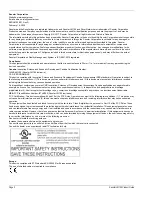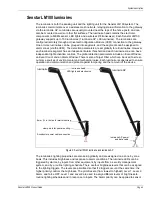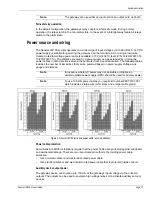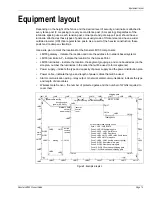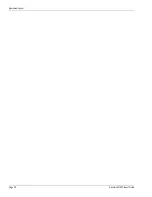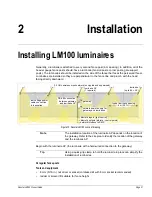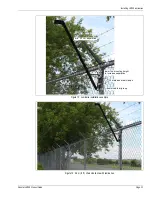
Fence structures
Page 16
Senstar LM100 Product Guide
Fence structures
To ensure consistent detection, the fence panels should be similar in type and size and be in good
condition. Ensure that there are no loose panels, fittings or metal parts that can move and cause
nuisance alarms. A shake test in which you grip the fence fabric in the middle of a panel and shake
it back and forth with an increasing motion will help identify any loose pieces. Listen for metal-on-
metal contact and correct any problems found. Verify that there are no washouts or depressions
under the fence that could allow an intruder access. Ensure that there is no vegetation or other
objects that can make contact with the fence in windy conditions.
Post clamps
Stainless steel post clamps are included for mounting the gateway and the luminaires. The post
clamps fit a wide range of post sizes with outside diameters (ODs) from 4.5 to 13 cm (1¾ to 5 in.).
The clamps will fit rectangular posts measuring up to 10 cm (4 in.) per side. The recommended
luminaire spacing is from 3 to 6 m (10 to 20 ft.) separation. However, The maximum recommended
separation between two luminaires is 20 m (66 ft.) to ensure accurate low power RF
communication between the devices.
Flexible fence types
Rigid fence types
Note
It is also possible to install luminaires by marking the fence posts,
drilling four holes and using self-tapping screws.
Figure 5: Standard flexible fence types
Figure 6: Rigid fence (palisade)
chain-link
welded-mesh
expanded metal

